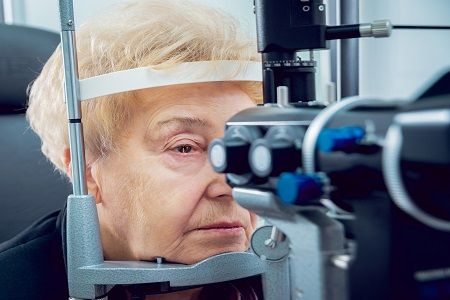Article
Protocol T Extension Study Sheds Light on Real-World Anti-VEGF Treatment
Author(s):
Results of the 5-year Protocol T extension study are offering insight into the differences in real-world treatment and study protocol with anti-VEGF treatments.

New 5-year results of Protocol T are offering ophthalmologists insight on the use of anti-VEGF agents in real-world treatment of diabetic macular edema (DME) compared to effects seen in the original study.
Results of the extension study, which examined data 3 years after completion of Protocol T, indicated visual acuity was still improved from baseline but mean improvements had declined since the end of the original study.
In an effort to assess follow-up treatment and outcomes at 5 years in eyes initially treated with either aflibercept, ranibizumab, or bevacizumab, investigators evaluated data from participants who returned 5 years after randomization to a collection of 67 Protocol T sites. In total, 317 individuals were included in the follow-up study.
Briefly, the Protocol T study compared the aforementioned anti-VEGF treatments in eyes with visual impairment from DME. All patients followed a protocol retreatment regimen for 2 years and gains in mean visual acuity were noted with each agent.
In the original trial, there were no apparent differences in agents at 1 or 2 years in patients with mild visual acuity impairment, but aflibercept was superior to the other 2 agents at 1 year and superior to bevacizumab at 2 years.
Conducted between August 2017-April 2019, the extension study obtained information related to best-corrected visual acuity, OCT, eye exams, and color fundus photographs using the same procedures as the original trial. The 317 individuals included in the extension study represent 48% of the original cohort.
Among those included in the extension study, 95% had at least 1 office visit with a retina specialist after completion of Protocol T. Median IQR for office visits between years 2 and 5 was 12 (5-21)—4 (2-7) occurring in year 3, 4 (1-7) in year 4, and 4 (1-7) in year 5. Additionally, 18 individuals had visits to retina specialists at a non-Protocol T clinical site.
Results of the analysis indicate the frequency of injections and visits declined after the conclusion of the 2-year Protocol T study. Investigators noted 217 of the 317 study eyes anti-VEGF treatment between years 2 and 5. Compared to baseline levels, mean visual acuity levels increased by 7.4 (5.9-9.0) letters at year 5, but decreased by 4.7 (3.3-6.0) letters between the end of the original Protocol T study and year 5.
Investigators noted when baseline visual acuity was between 20/50 and 20/32 had a mean 5-year visual acuity gain of 11.9 (9.3-14.5) letters compared to baseline but a mean decline of 4.8 (2.5-7.0) letters compared to year 2. In patients with vision between 20/32 and 20/40, there was a mean 5-year visual acuity gain of 3.2 (1.4-5.0) letters from baseline, but a decrease of 4.6 (3.1-6.1) letters compared to year 2.
Results also indicated a decrease in mean central subfield thickness of 154µm (142-166) between baseline and year 5. Comparison to results at year 2 suggests mean central subfield thickness remained stable (-1µm,-12 to 9) during the extension study.
This study, “Five-Year Outcomes after Initial Aflibercept, Bevacizumab, or Ranibizumab Treatment for Diabetic Macular Edema (Protocol T Extension Study),” was published in Ophthalmology.





